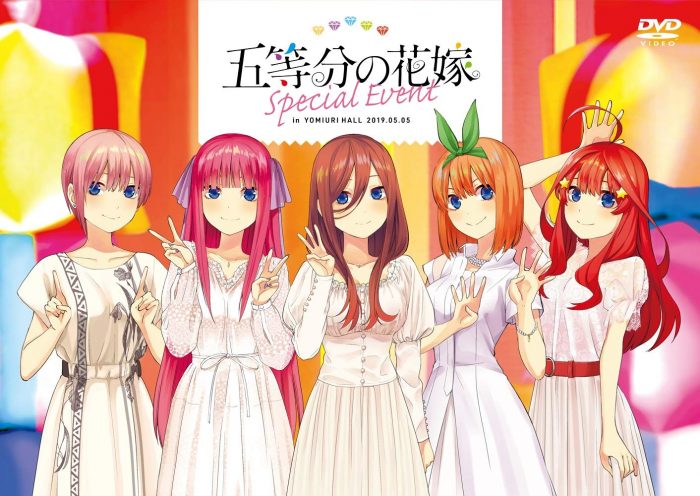6 Reasons Why Manga is Better Than Anime


Introduction
Yup, we’re going there! Like book readers angrily munching popcorn in the back of the theatre, grumbling about how the movie is totally ruining that character, we manga readers can have pretty intense views on anime adaptations. Sometimes, this is just a matter of opinion – some of us can be very particular about voice acting or animation, for example – but there are plenty of times where consuming the source material is objectively a better experience. This article isn’t intended to convince you to abandon your anime-watching ways. Trust us, we also enjoy seeing our favorite manga come to life on the TV or the silver screen, with silky-smooth action scenes and kick-ass opening songs! But as lovers of those black-and-white pages filled with sharp dialogue, impeccably drawn characters, and laugh-out-loud gags, we want to share the reasons why we love manga more. So grab that bucket of popcorn, keep an eye on the comments section, and join us for this breakdown of 6 Reasons Manga is Better Than Anime!
1. Original Vision
A little self-evident perhaps, but reading the original material (either light novels, or in this case, manga) is really the best way to understand the creator’s intentions. When an anime studio chooses to adapt a work, it becomes a collaborative effort between a team of directors and writers who can pick over the storyline and characters however they want. Sometimes the anime can diverge heavily from the original vision. Most fans of Tokyo Ghoul will tell you to completely avoid the second season of the anime (Tokyo Ghoul √A) because it completely diverges from the manga. Not only that, but it fatally misunderstands character motivations, telling a very different story and forcing the show to awkwardly backpedal in Season 3 to make this new material work with the manga arcs it circles back to. At worst, an adaptation like this could put anime-only fans off the story entirely, which is a loss for everyone. Even when an anime studio does faithfully follow the material, they simply might not have the budget available to adapt every aspect of the manga. The incredibly popular slice-of-life Fruits Basket received a three-season anime adaptation, but the final season was only thirteen episodes long (a single cour), resulting in missing storylines and absent character growth that made the pacing feel a little off (you can check out our review of the final season of Fruits Basket down in the links below). Simply put, reading the manga is the only way you can truly understand the author’s intentions. From the original plot to character development, reading the manga will definitely let you witness the mangaka’s original vision firsthand.
2. (Almost) Guaranteed Ending
Speaking of adaptation woes, how many times have you watched an anime only to learn that it’s never getting another season? Have you been waiting nearly a decade for the conclusion to Bleach? What if you’d much rather see 5-toubun no Hanayome (The Quintessential Quintuplets) be finished with a third season instead of a film? Aside from a few times when manga have been discontinued early, quite a lot of manga will naturally reach the end of their story over a period of several years. Unless you get extremely unlucky, you can rest assured that you’ll be able to follow your beloved characters to the end, without refreshing Honey’s Anime to see if a new season has been announced! (You can check out our list of five manga that deserve another season in the links down below.) Having an anime end prematurely isn’t the only concern. Some anime begin adapting the material too early, putting themselves in a position where they either need to wait for new material, or else have to create their own content. This creates the infamous filler material arcs – non-canonical episodes added to pad out the seasons between story arcs. We at Honey’s Anime have previously covered some of the worst filler-arc offenders – you can find that article linked down below as well. If an anime decides to march ahead and create their own ending, well, that’s likely to create fan backlash as well. By deviating from the original vision, an anime can tell a drastically different story – such as the hotly contested 2003 adaptation of Arakawa Hiromu’s Fullmetal Alchemist. After quickly outpacing the available material, the studio wrote their own way to the end, finishing in a very different place with crucial story elements drastically different from the manga’s eventual conclusion. Thankfully, Fullmetal Alchemist received a much closer adaptation in the well-received 2009 Fullmetal Alchemist: Brotherhood. If you want to guarantee yourself an ending without waiting for years in the dark, pick up the manga and get reading!
3. Sometimes, It’s Better In Black
Even we can admit that modern anime looks stunning. We’re living in a golden age of animation, when comedy shows like Kobayashi-san Chi no Maid Dragon (Miss Kobayashi’s Dragon Maid) have godly levels of animation that our younger selves could only dream of seeing! But sometimes, it’s just better in black (and gray). Full-color illustration is definitely an artform unto itself, but mangaka have honed their craft for years, perfecting the usage of gradient effects, screen-tone, and pure black, creating stunning panels that can be mesmerizingly beautiful or hauntingly macabre. Then there’s the technical skill required to make emotions and actions fly off the pages. From shounen manga that convey magical abilities or hyper-fast fights, to romance and dramas that express every painstaking emotion, conveying motion in static pages is undeniably a difficult skill. That’s to say nothing of the hugely talented teams behind these mangaka, helping produce background images and special effects that make the story pop right off the pages. If there’s anything that proves how far we can push the limits of manga, just read a sports manga like Haikyuu! You’ll feel like you’re right there playing the game yourself, all from the comfort of your own couch. With such a limited palette, bringing a world to life that feels colorful without any color is something only manga artists truly understand how to achieve.
[ad_middle class="mb40"]
4. Uncensored & Unfiltered
Let’s be honest - the history of anime adaptation is practically synonymous with censorship in the West. From the misadventures of the 4Kids adaptations of the 1990s to modern censorship that still restricts what we view, anime can often suffer harshly in the editing room. Sometimes there are differences in culture that deem content ‘inappropriate’ – such as the more frequent sexualization of minors in anime that leads to censorship in the West – or just plain bigotry that results in awful dubbing to obscure a character’s sexuality or gender (looking at you, original Sailor Moon dub!). We won’t get into too much detail on the subject here, but we have a fantastic editorial linked down below that covers censorship in anime and provides some prime examples of the worst offenders. In manga, there are still a few translation and censorship issues, so we won’t pretend that reading manga is a perfect solution to this problem. But you’re more likely to find content presented closer to the original Japanese run, with uncensored nudity, gore, and coarse language. Unfortunately, because the media will survive with elements intact, there’s always the possibility it will run afoul of government oversight that fatally misunderstands the context of manga, such as the infamous Australian incident when No Game, No Life and Sword Art Online suffered heavy government intervention. We would’ve thought that the grumpy old men in charge of the government might have more pressing issues to deal with, but apparently making sure we don’t see panty-shots is quite a high priority. Luckily, overseas shipping exists, so you’re never too far away from getting your hands on manga. Although manga readers won’t need to worry quite so much about the censorship issues, if you really want to experience the true, unadulterated original, well… we should all start learning Japanese!
5. Manga Extras!
Extra panels and content are some of our favorite parts of the manga-reading experience, and are usually only found in the bind-up volumes. Tucked away at the back of each volume, you’ll find four-panel gags, character bios, or even interviews with the mangaka themselves. Depending on the individual volume, you might also get some additional insight from the author and artists, talking about the production of the volume, their vision for the future, or just some thoughts about their daily lives. That’s not all though, because some manga will also ship with limited edition fold-out posters to collect. If you can afford manga box sets, you might get even more goodies – such as the incredible Sword Art Online: Platinum Collector’s Edition, which comes with twenty art prints, along with two hardcover editions of the first light novels. Is it too late to update our Christmas wish list?! Getting a few goodies with your manga might not make or break your experience, and it’s not something we actively consider when deciding whether or not to buy a volume. But getting a little extra surprise such as a poster is always welcome, and finding character biographies or interviews brings us, the readers, closer to the mangaka and their creative process, making the story feel more fleshed out than ever before.
6. Always Stay Ahead
Do you like dropping leading hints to your anime-only friends about the fate of their favorite character? Do you have to sit painfully silently while your friends are discussing theories about the latest episode, when you know exactly what happens fifty chapters from now? Staying ahead is the single biggest advantage manga readers have over anime watchers, thanks to the very nature of adaptations themselves! Shingeki no Kyojin (Attack on Titan) fans have been in the know about the ending since April (in serialized format), while anime watchers are anxiously waiting another few months for the second half of the final season to air. And as we mentioned earlier, not every manga can be fully adapted to screen, either due to budget and episode restraints or simple creative differences in the direction. This means that manga readers know a little more about the world and the character’s motivations, which may not be immediately apparent in the anime. By reading the manga, you can stay up-to-date even during the lulls between seasons, and mercilessly flaunt your superior knowledge to your anime-only friends. (Just remember to be a good sport, and don’t spoil anything!)
Conclusion
So there we have it – the six reasons why manga is better than anime! Sometimes the very nature of an adaptation means the source material will be a ‘truer’ experience, and sometimes reading manga is just a different experience. As we said in the introduction, this article isn’t designed to sway anime-watchers over to the land of manga forever. But for viewers who’ve never been all that interested in reading manga, there is plenty of extra context (and content) you’re missing out on! With modern subscription services to read manga online, it’s getting cheaper than ever to catch up on your favourite series, so next time you’re waiting (im)patiently for the next season to air, why not check out the manga instead? We know this can be a pretty contentious issue, but we’d love to hear your thoughts on the manga vs anime debate down in the comments below. We’ll be around to talk, so drop a comment, and as always, thank you for reading!
[recommendedPost post_id='331840' url='' title='' img='' class='' widget_title=''] [recommendedPost post_id='69000' url='' title='' img='' class='' widget_title=''] [recommendedPost post_id='344513' url='' title='' img='' class='' widget_title=''] [recommendedPost post_id='38607' url='' title='' img='' class='' widget_title='']

No comments